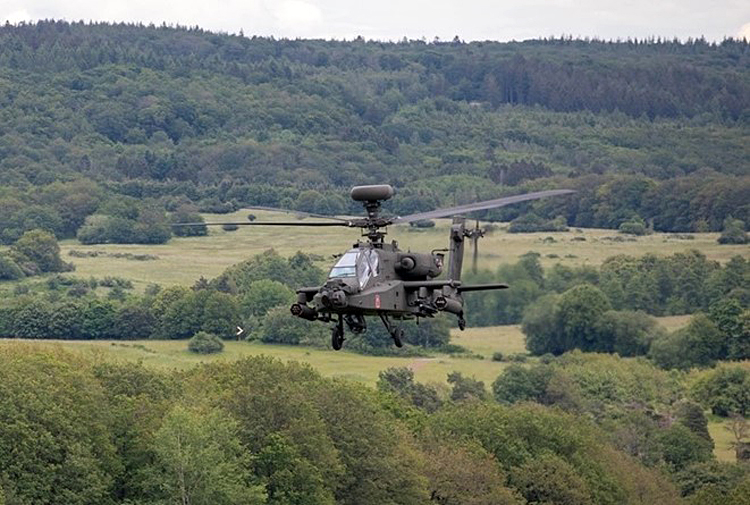INDIAN ARMED FORCES CHIEFS ON OUR RELENTLESS AND FOCUSED PUBLISHING EFFORTS

The insightful articles, inspiring narrations and analytical perspectives presented by the Editorial Team, establish an alluring connect with the reader. My compliments and best wishes to SP Guide Publications.

"Over the past 60 years, the growth of SP Guide Publications has mirrored the rising stature of Indian Navy. Its well-researched and informative magazines on Defence and Aerospace sector have served to shape an educated opinion of our military personnel, policy makers and the public alike. I wish SP's Publication team continued success, fair winds and following seas in all future endeavour!"

Since, its inception in 1964, SP Guide Publications has consistently demonstrated commitment to high-quality journalism in the aerospace and defence sectors, earning a well-deserved reputation as Asia's largest media house in this domain. I wish SP Guide Publications continued success in its pursuit of excellence.
- Indian Air Force Aims for Full Indigenous Inventory by 2047 — Air Chief Marshal A.P. Singh
- Rajnath Singh assumes charge as Defence Minister for the second consecutive term
- Interim Defence Budget 2024-25 — An Analysis
- Union Defence budget 2024
- Prime Minister Modi Flies in the LCA Tejas
- New Chapter in India-Italy Defence Ties
- Airpower beyond Boundaries
Lockheed Martin Awarded Contracts to Develop Advanced Electronic Warfare Capabilities for US Army Apache Helicopter Fleet

Lockheed Martin has received a contract from the Apache Attack Helicopter Project Management Office (with the Apache Sensors Product Office having responsibility for the management of the program) to develop the Gen 3 Radar Frequency Interferometer (RFI) / Radar Warning Receiver (RWR) APR-48B system for the US Army's Apache helicopter fleet.
The Gen 3 RFI system will provide significant capability enhancements that are enabled by advanced microelectronics. This development effort is the next step in Lockheed Martin's 30+ year history of successfully developing and producing the Gen 1 RFI and Gen 2 RFI systems for Apache.
How we got here
The Gen 3 RFI system will build on technology developed as a result of Lockheed Martin's ongoing collaboration with Intel (NYSE: INTC), Altera, an Intel Company, Booz Allen Hamilton, and the Office of the Under Secretary of Defense for Research and Engineering (OUSD R&E) under the Trusted and Assured Microelectronics (T&AM) program's Stimulating Transition for Advanced Microelectronics Packaging (STAMP) and State-of-the-Art Heterogeneous Integration Packaging (SHIP) projects.
Through the SHIP project, Intel's Altera developed a Multi-Chip Package (MCP-2) that can be tailored to different functions to modernize mission-critical Department of Defense (DoD) systems. Through STAMP, Lockheed Martin and Altera optimized architectures that leveraged the MCP-2 microchip for electronic warfare applications, accelerating the transition of capabilities to the warfighter.
The Big Picture
Lockheed Martin has used its 50 years of electronic warfare expertise, coupled with investments in state-of-the-art microelectronics and modern software capabilities, to architect the Gen 3 RFI system and provide optimized advanced capabilities.
In collaboration with the Apache Program Office, Lockheed Martin will be able provide a significantly improved sensor performance in a smaller, lighter package providing the ability to add additional functionality into the Gen 3 for the Apache. Through this upgrade, Lockheed Martin will complete the development, build, and qualification of the Gen 3 RFI system, with the long-term plan to replace all currently fielded Gen 2 systems and integrate the Gen 3 system on all Apache aircraft.
A key enabler for this effort is the use of the MCP-2 microchip, which is the catalyst for the full-system technology upgrade, making it smaller, lighter, and more powerful than the legacy Gen 2 system.
Significantly, this is also the first time that Radio Frequency System on a Chip (RFSOC) is being used in the APR-48B electronic warfare system, demonstrating Lockheed Martin's commitment to furthering electronic warfare microchip capabilities and advancements.
Strategic Perspectives
"This accomplishment aligns with Lockheed Martin's electronic warfare strategy to partner with commercial microelectronics companies and use our subject matter expertise to deliver our customers game changing solutions that maximize capability, while minimizing size, weight, power, cost, and development time," said Deon Viergutz, Spectrum Convergence vice president at Lockheed Martin. "We are honored to partner with our commercial partners and committed to providing technology to our service members that helps to keep them ahead of ready."
What's Next?
OUSD(R&E)'s T&AM program supports DoD microelectronics modernization leveraging state-of-the-art, commercially driven technologies. By leveraging commercially-driven technology and partnerships, supply chain integrity and US-based capabilities, T&AM is accelerating the delivery of best-of-breed solutions for the warfighter.
Throughout the next several years, Lockheed Martin will partner with the Apache Attack Helicopter Project Management Office to implement, design, test, produce and deliver the Gen 3 RFI System.
To obtain full capability, it is crucially important to combine microelectronics with Lockheed Martin's expertise in proven system architecture, which allows delivery of electromagnetic spectrum capabilities in smaller and less expensive packages.
With over 50 years of airborne electronic warfare experience, Lockheed Martin is strategically positioned to continue developing microelectronic technologies.





